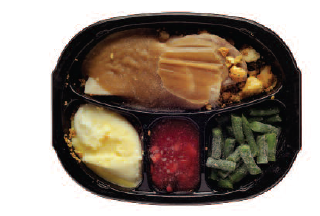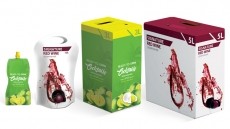‘Safety first’ approach to BPA risk recommends reducing plastic packaging

The advice was one of the points made by the Royal College of Obstetricians and Gynaecologists (RCOG) in a Scientific Impact Paper launched this week.
Current risk assessments for endocrine disruptors suggest that the levels of human exposure are too low to pose a real risk, they said.
However, the risk assessments are performed for individual chemicals, so while a chemical may be ineffective at an individual level exposure to a mixtures of four to 10 endocrine disruptors could have adverse affects.
“The ways in which this data will be factored into safety assessment remains unclear at present, contributing to the aforementioned uncertainty surrounding the relationship between chemical exposure and fetal risks,” said RCOG.
“On present evidence, it is impossible to assess the risk, if any, of such exposures. Obtaining more definitive guidance is likely to take many years; there is considerable uncertainty about the risks of chemical exposure.”
Equipment and packaging risk
The authors point out that it is not just the type of food that pregnant women consume posing a risk, but the handling equipment and packaging materials used to contain it.
The paper recommends that the best method for pregnant women is a ‘safety first’ approach, which is to assume there is risk present even when it may be minimal or eventually unfounded.
Recommendations made in the paper include: using fresh food whenever possible and reducing foods in cans/plastic containers including their use for food storage.
The report said due to exposure found in everyday products it was difficult to identify whether they exert any effect because there is no unexposed ‘control’ group with which to compare data.
RCOG advice
Fresh food will generally contain fewer non–food chemicals and/or lower levels than processed oven–ready/microwave–type meals, said the report.
“This can be illustrated by reference to two ubiquitous chemicals used in various plastics (and other uses), namely phthalate esters and bisphenol A.
“When individuals were switched for three days from their normal food sources to the same foods freshly sourced and unpackaged, the levels of bisphenol A and a key phthalate in their urine decreased by 65% and 53% respectively.*
“When they resumed their normal eating practices, their exposures returned to the pre–intervention levels.”
Breast Cancer UK welcomed the advice for pregnant women to "play it safe" and avoid chemicals found in many common household products.
Breast Cancer UK backing
Lynn Ladbrook, campaigns manager, Breast Cancer UK, said: “Mums-to-be have the right to know that many every day products contain chemicals that are linked to breast cancer and other diseases.”
These chemicals should not be used in our products in the first place, she added.
“Until the government responds to the overwhelming amount of scientific evidence that raises serious concerns over the safety of our exposure to BPA and other chemicals and tightens regulation, pregnant women should be given all the information they need to make informed choices about which products they might prefer to avoid in order to give their child the best chance of living a full and healthy life.”
FDA updates stance
However, an update last week on the US Food and Drug Administration’s (FDA) website on BPA seems to make the agency’s position clear under the heading “Is BPA safe?”.
“Yes. Based on FDA’s ongoing safety review of scientific evidence, the available information continues to support the safety of BPA for the currently approved uses in food containers and packaging.
“People are exposed to low levels of BPA because, like many packaging components, very small amounts of BPA may migrate from the food packaging into foods or beverages.”
*= [Source: Rudel RA, Gray JM, Engel CL, Rawsthorne TW, Dodson RE, Ackerman JM, et al. Food Packaging and Bisphenol A and Bis (2–Ethyhexyl) Phthalate Exposure: Findings from a Dietary Intervention. Environ Health Perspect 2011;119:914–20]










